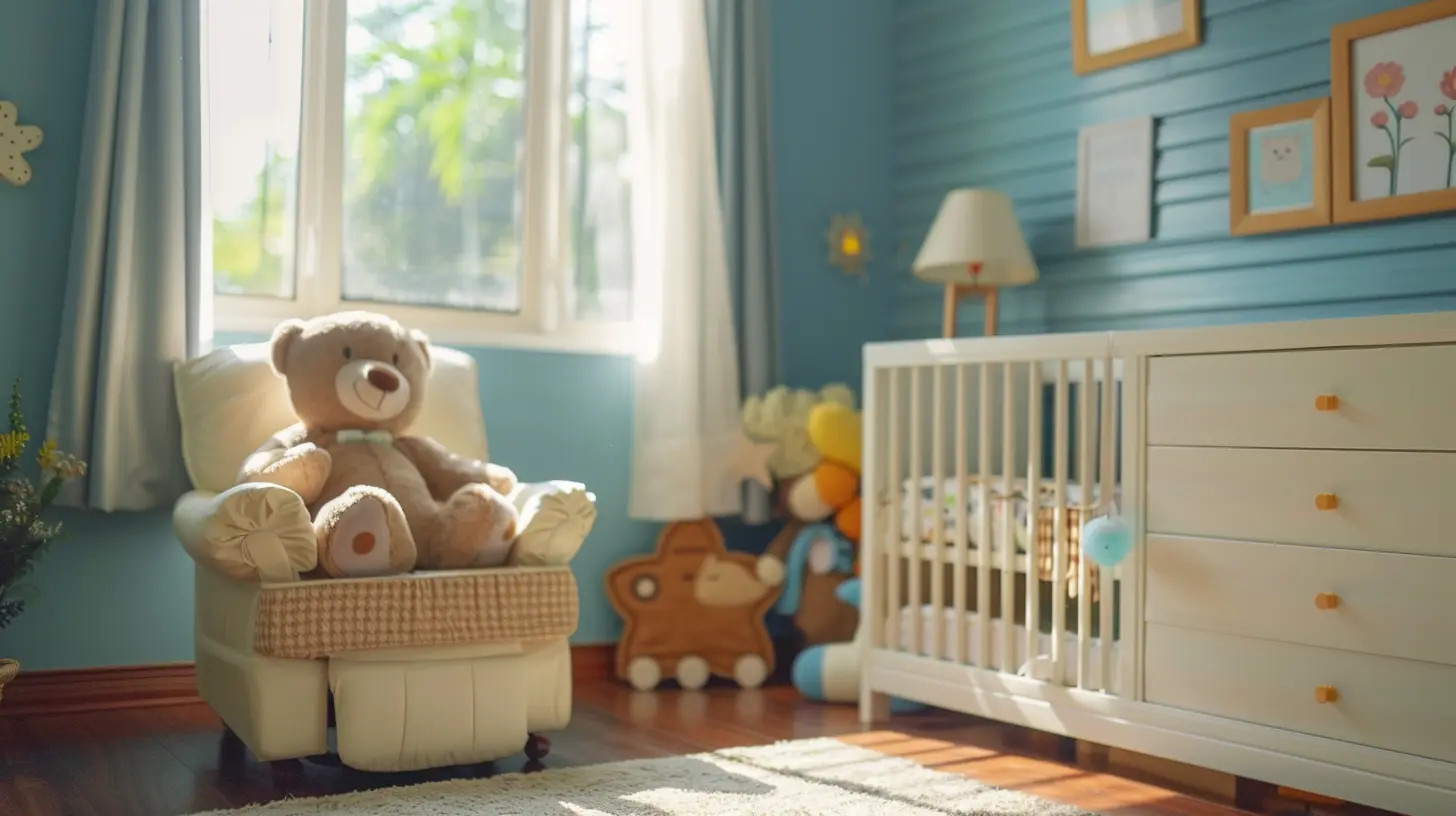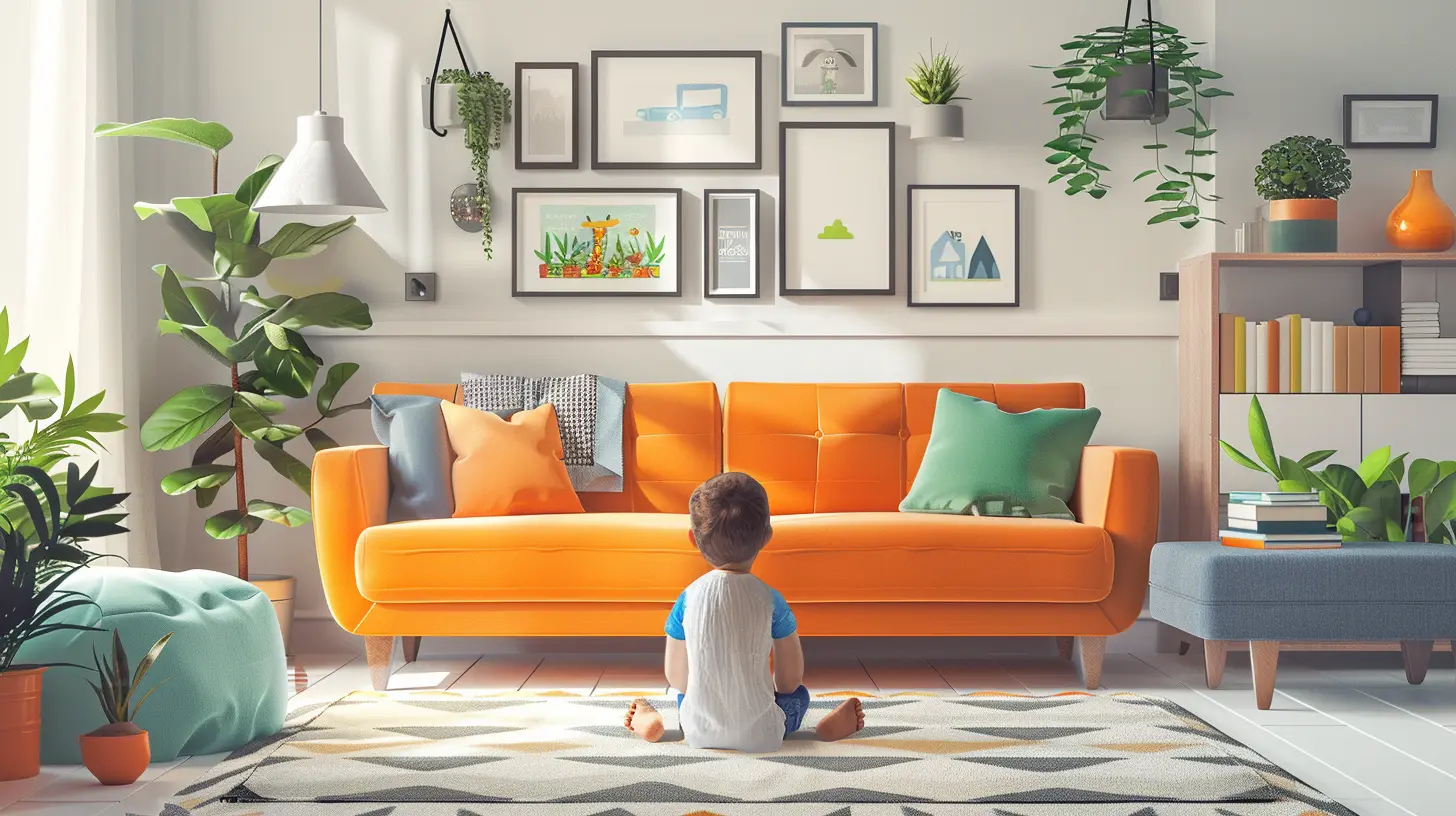Why Furniture Anchoring is a Childproofing Necessity
24 May 2025
As parents, we’re constantly chasing after our tiny explorers who seem determined to test every boundary. Babies and toddlers are miniature scientists—they climb, pull, and yank on things with zero thought about safety. It’s cute, but let’s be real: it’s also terrifying. If you have kids or are preparing for their arrival, you've probably heard about furniture anchoring. But do you know why it’s not just a suggestion, but a necessity?
Let’s dive into the gritty details of why furniture anchoring is one of the most important moves you can make to childproof your home. Grab a coffee, settle in, and let’s chat about keeping your little ones safe from toppling furniture disasters.
The Hidden Danger Lurking in Your Home
Ever walked into your living room and thought, Wow, that dresser is just waiting to fall on someone! Probably not, right? For most of us, furniture feels solid, heavy, and immovable. But to a toddler scaling it like a mountain climber, your furniture turns into a deadly hazard.The stats don’t lie—furniture tip-overs cause thousands of injuries to children every year. According to the Consumer Product Safety Commission (CPSC), a child is injured every 30 minutes due to falling furniture or TVs. Tragically, many of these incidents are fatal. And here’s the kicker: most of these accidents happen right at home.
Think about it: Your favorite bookshelf? It’s a ladder to a curious toddler. That sleek TV stand? It’s a disaster waiting to happen if your child decides to give it a tug. 
What Causes Furniture Tip-Overs?
Before you start panic-Googling “furniture anchors,” let me break it down for you. Understanding why furniture tips over can help you see just how big an issue this is. Here's what's going on:1. Climbers on the Loose
Kids love to climb—it’s like an Olympic sport for them. Dresser drawers? Those are steps in their eyes. A child trying to reach a remote or favorite toy atop a bookshelf might unknowingly pull the whole thing down on themselves.2. Uneven Weight Distribution
Some furniture items are designed in ways that make them naturally unstable. Drawers that pull out, for example, can shift weight forward, making the entire piece tip precariously.3. Overloaded and Unbalanced Furniture
Ever stuffed a drawer with way too many items? Guilty here! Overloading furniture creates imbalance. Combine that with an eager toddler tugging on it, and the results could be catastrophic.
Why Furniture Anchoring Should Be a Priority
If you’re thinking, My furniture is heavy. It’s fine, I need to burst that bubble. Even what you consider “sturdy” furniture can tip if enough force is applied. That’s where furniture anchoring comes to the rescue.Anchoring involves securing furniture and TVs to walls using straps, brackets, or anchoring kits. It’s a simple, affordable step, but it could literally save your child’s life.
1. It’s Quick and Easy
Look, I get it—life as a parent is busy. But securing furniture isn’t one of those projects that will eat up your weekend. Most anchors take 5-10 minutes to install, tops. That’s less time than it takes to binge an episode of your favorite Netflix series!2. It Provides Peace of Mind
As parents, we already have a laundry list of things to stress about. Anchored furniture takes one major worry off your plate. Every time your child races into the room (or starts climbing something they shouldn’t), you’ll feel that sense of relief knowing you’ve taken precautions.3. It’s Affordable
Furniture anchors are ridiculously cheap. Most kits cost less than $20 and can secure multiple pieces. You don’t need to hire an expensive handyman either—this is a DIY win!
How to Anchor Furniture Like a Pro
Not sure where to start? No worries—I’ve got your back. Anchoring furniture is easier than it sounds. Here’s a step-by-step guide to childproofing your home like a boss:Step 1: Identify Hazardous Furniture
Walk through every room in your house and take a mental inventory. Prioritize pieces that are:- Tall and narrow (like bookshelves, dressers).
- Top-heavy items (like TV stands or entertainment centers).
- Frequently used as “climbing gyms” by your kids.
Step 2: Get the Right Anchors
Purchase furniture straps or brackets designed for the specific furniture you want to secure. Many options exist on the market, and they’re all pretty budget-friendly.Step 3: Find Wall Studs
Use a stud finder to locate solid sections of your wall. Anchors need to be secured into studs for maximum safety; drywall alone won’t cut it.Step 4: Attach the Anchors
Carefully follow the instructions that come with your anchor kits. Firmly attach one end of the strap or bracket to the furniture and the other end to the wall. Once installed, give the furniture a gentle tug to ensure it’s secure.Step 5: Repeat for All Hazardous Items
Don’t slack—one anchored dresser doesn’t make the entire house safe. Anchor every piece of furniture that poses a risk.Common Myths About Furniture Anchoring
Let’s clear up some misunderstandings that might be holding you back from anchoring.Myth 1: My Child is Supervised, So It Won’t Happen
Supervision is essential, but it’s not foolproof. Accidents happen in the blink of an eye, especially when you’re distracted for even a second (hello, phone calls and diaper changes).Myth 2: My Furniture is Too Heavy to Tip
Even the heaviest furniture can become unstable if a child climbs, pulls, or shifts weight to one side. Don’t underestimate a determined toddler—they’ve got shocking strength!Myth 3: Anchoring Will Damage My Walls
Yes, anchoring involves drilling into walls, but the minor damage is worth your child’s safety. Plus, any holes can easily be patched later.What’s At Stake Without Anchoring?
I hate to be all doom-and-gloom, but the consequences of not anchoring your furniture can be devastating. Injuries from furniture tip-overs range from broken bones to traumatic brain injuries. Worst of all, the emotional toll on families can be unbearable.Sure, anchoring furniture may seem like a hassle upfront. But at the end of the day, your child’s safety far outweighs the time, effort, or cost involved.
Other Childproofing Tips to Pair with Anchoring
While we’re on the subject of childproofing, here are a few additional safety measures to consider:- Corner Guards: Soft edges on furniture protect against bumps and bruises.
- Power Outlet Covers: Keep those tiny fingers away from electrical shock hazards.
- Cabinet Locks: Prevent kids from accessing dangerous items like cleaning supplies.
Safety isn’t just one thing; it’s a combination of small, intentional actions that keep your child out of harm’s way.
Final Thoughts: Your Child’s Life is Worth It
Here’s the bottom line: furniture anchoring isn’t optional. It’s a simple, inexpensive step that could save your child from a life-threatening accident. We all want to give our kids the freedom to explore, but it’s our responsibility to make sure they can do so safely.So grab those anchors and a screwdriver, and make today the day you childproof your home for good. Your future self (and your child) will thank you.
all images in this post were generated using AI tools
Category:
ChildproofingAuthor:

Max Shaffer
Discussion
rate this article
3 comments
Melody Forbes
Furniture anchoring is essential for childproofing to prevent serious injuries. Unsecured furniture poses a significant tipping hazard, especially for curious toddlers. By securely anchoring bookshelves, dressers, and other tall items, parents can create a safer environment, significantly reducing the risk of accidents in the home.
June 9, 2025 at 3:47 PM

Max Shaffer
Absolutely! Anchoring furniture is crucial for safety, as it helps prevent tipping accidents and protects curious toddlers from serious injuries.
Chelsea McGowan
Absolutely agree! Anchoring furniture is non-negotiable for child safety. It’s a simple yet crucial step to prevent accidents. Prioritizing this measure shows that you take your child's safety seriously—let’s make homes safer for our little ones!
June 3, 2025 at 4:50 AM

Max Shaffer
Thank you for your support! Anchoring furniture is indeed essential for keeping our little ones safe. Every step we take towards better safety counts!
Fleur Gomez
In a world where curiosity dances, Anchored dreams keep little ones safe. Furniture’s embrace, steadfast and true, Guarding laughter and tiny adventures, A vital step in love’s gentle grace.
May 26, 2025 at 3:03 AM

Max Shaffer
Thank you for beautifully capturing the essence of furniture anchoring! It truly plays a crucial role in ensuring a safe environment for our little explorers.



